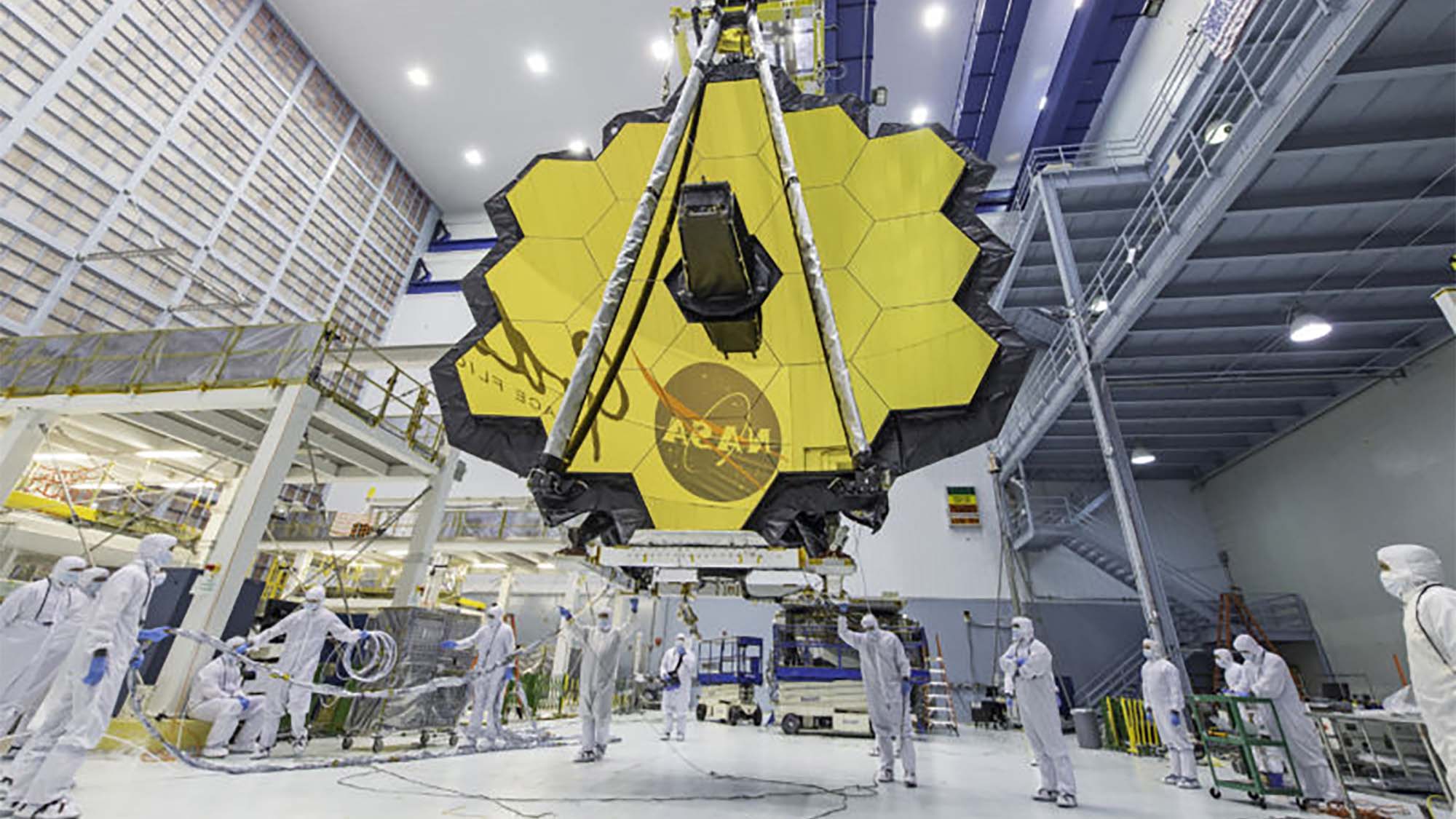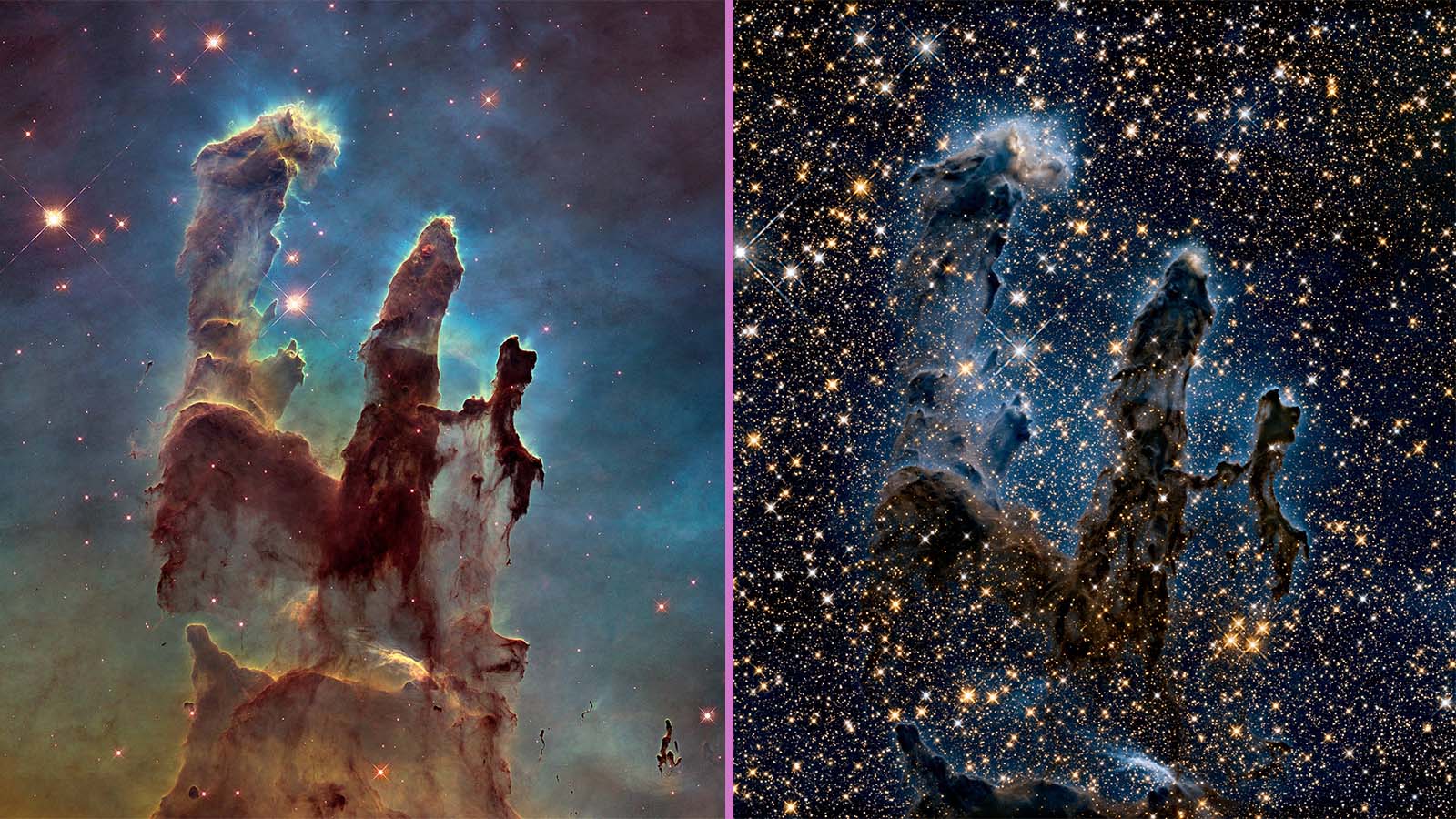How to watch NASA's James Webb Space Telescope launch online
All we want for Christmas is a successful launch

If you're planning to watch the launch of NASA's James Web Space Telescope, you're not alone. The Christmas Eve event is unquestionably the most exciting event of the year for NASA — and it's also unquestionably the most fraught with anxiety. You can join us in all of our live coverage with our James Webb Space Telescope live blog right now!
It will take 29 days to fully deploy the James Webb Space Telescope, sometimes called JWST, a period that NASA has described as "29 days on the edge." Others, ourselves included, have called it "the month from hell," as the delicate operation to deploy the next generation space telescope unfolds.
Any number of things could go wrong during the 29-day deployment, and given the nature of the operation, should something physically happen to the James Webb Space Telescope, there will be no way to fix it and salvage the $10 billion telescope. The stakes for the James Webb Space Telescope launch deployment couldn't be higher.
This week's launch is the kick off to the operation, and we'll be covering the event live as it happens. If you're wondering how to follow along, we've pulled it all together in one place so you can watch the launch along with us.
How to watch NASA's James Webb Space Telescope launch
The launch window opens at 7:20AM EST on Friday, December 25, and the rocket carrying the precious cargo will launch from the Guiana Space Center in Kourou, French Guiana. If the weather cooperates and there aren't any preflight issues, the James Webb Space Telescope should take off shortly after 7:20AM.
Launch windows are only time frames when a launch is safe to take place, so the actual launch itself can be any time during that window, though if conditions are good, launches typically happen as soon as the window opens. Why wait, after all?
NASA will stream the James Webb Space Telescope launch on NASA Live, and the space agency will also stream on YouTube, Facebook, Twitter, and Twitch. We've embedded the livestream feed below to make it super easy to follow along.
Get daily insight, inspiration and deals in your inbox
Sign up for breaking news, reviews, opinion, top tech deals, and more.
Coverage of the launch is scheduled to start at 3AM EST on December 25 with fueling updates, while the main launch coverage should kick off at 6AM EST.
What is the James Webb Space Telescope?
What is the James Webb Space Telescope?
The James Webb Space Telescope is the successor to the Hubble Space Telescope, which launched in 1990. As fine a space telescope as it is, the Hubble is 30-year old tech at this point, and there are some important wavelengths of light that it is incapable of imaging, namely the middle and lower end of the infrared spectrum.
This is critically important for seeing the oldest galaxies and stars, as their incredible age has put them so far from us that the light from is pushed deep into the infrared spectrum. Infrared light is also able to penetrate dust clouds and nebula in ways that visible and ultraviolet light cannot.
The James Webb Space Telescope is specifically designed to see this wavelength of light, which means it will be capable of seeing deep into the universe's history to the earliest galaxy formation, as well as seeing new features of our galaxy that we didn't even know were there.
To get an understanding of the difference, this is the famous Pillars of Creation in the Eagle nebula, taken by the Hubble Space Telescope. The left side of the image is taken using visible light, while the right side of the image is using Hubble's near-infrared capabilities.

Yep, that is a lot of stars.
And that's just a tiny part of the infrared spectrum that we can see using Hubble. One of the first things the James Webb Space Telescope will image, we're certain, will be the Pillars of Creation if for no other reason than to show off its capabilities. How it's view of the Pillars of Creation will differ from what we already have will be telling.
The telescope, which originally had a $1 billion budget and was scheduled for a 2007 deployment has since grown to a $10 billion project nearly two decades in the making.
The telescope itself, when fully deployed, is the size of a tennis court and will be about 100 times as powerful as the Hubble Space Telescope, thanks to its enormous, 21.5-foot tall primary mirror, which has 6.25 times as much light-collecting surface as Hubble's 7.9-foot tall mirror.
In addition, because the James Webb Space Telescope will be positioned much further away from Earth than the Hubble Space Telescope is, it will have a clearer view of the universe than Hubble would ever be capable of achieving from low Earth orbit.
Needless to say, it's a big friggin' deal.
Why will it take the James Webb Space Telescope so long to deploy?
Unlike the Hubble Space Telescope, the James Webb Space Telescope won't be in low Earth orbit. Instead, it will be positioned at what is known as the second Lagrange point, or L2, about 1 million miles (1.5 million kilometers) away from Earth.
The five Lagrange points refer to the three-body problem, which is the unpredictable gravitational interactions between three bodies in space – in this case the James Webb Space Telescope, Earth, and the Sun.
According to NASA, Lagrange points are locations where "the gravitational pull of two large masses precisely equals the centripetal force required for a small object to move with them."
Essentially, this is a point where the James Webb Space Telescope can be far enough away from Earth to get a clear view of the universe, but not get pulled out of orbit by either the Earth or the Sun. This allows it to continue orbiting the Sun in a stable-ish position relative to Earth in a safe, predictable way.
There is also another, and arguably more important, reason for putting the telescope out that far. Infrared light can typically be felt as heat, and so heat can interfere with infrared detection.
This requires the light collecting mirror of the telescope to be as cold as possible – in this case, -388 degrees Fahrenheit / -233 degrees Celsius – so it needs to be insulated even from the heat of its own computers and communication equipment, not to mention the Sun, the Earth, and even the Moon.
In order to use the telescope's Sun shield to block out heat interference from all three, it needs all three to be positioned on its shield facing side, which it can do at L2. Its transmission, processing, and navigating equipment, meanwhile, is all on the Sun-facing side of the shield.
On its way to L2, the James Webb Space Telescope will deploy several of its components, such as its Sun shield and its various antennas, which will also take time and occur in stages, though the telescope will be in motion throughout these operations.
How long will it take the James Webb telescope to reach its destination?
The James Webb Space Telescope will take 29 days to reach the second Lagrange point. After that, it will be in a stable orbit around the Sun alongside Earth.
Why is everyone nervous about the James Webb Space Telescope launch?
In addition to the launch being a risky thing in and of itself – we're carrying a very delicate instrument into space by shooting it into orbit on a rocket, after all – what is especially fraught is what comes after it makes it into low Earth orbit.
From there, it has to propel itself out to a distance of 1 million miles (1.5 million kilometers), making a number of maneuvers to position itself at its L2 destination. A misfired thruster or some other mistake could knock it off course so that it doesn't reach the stable L2 orbit it needs in order to complete its mission.
It's also travelling far beyond the moon, somewhere that humans have never gone in person. So, if something breaks along the way, there's no way for us to go up there and fix it the way we did when we discovered Hubble's mirror had a key flaw that was screwing up images.
Astronauts were able to go up and fix Hubble's mirror so that it was able to operate as planned. We can't do the same for the James Webb Space Telescope.
What's more, there are hundreds of points of failure that could render the James Webb Space Telescope useless. We need to succeed at each one of those points, or else this was all for nothing. Worse still, much of this involves maneuvers and operations that we've never attempted before, so we have to get everything right on the first attempt.
Needless to say, it's going to be a tense month all around.
- SpaceX: everything you need to know about the pioneering space company

John (He/Him) is the Components Editor here at TechRadar and he is also a programmer, gamer, activist, and Brooklyn College alum currently living in Brooklyn, NY.
Named by the CTA as a CES 2020 Media Trailblazer for his science and technology reporting, John specializes in all areas of computer science, including industry news, hardware reviews, PC gaming, as well as general science writing and the social impact of the tech industry.
You can find him online on Bluesky @johnloeffler.bsky.social